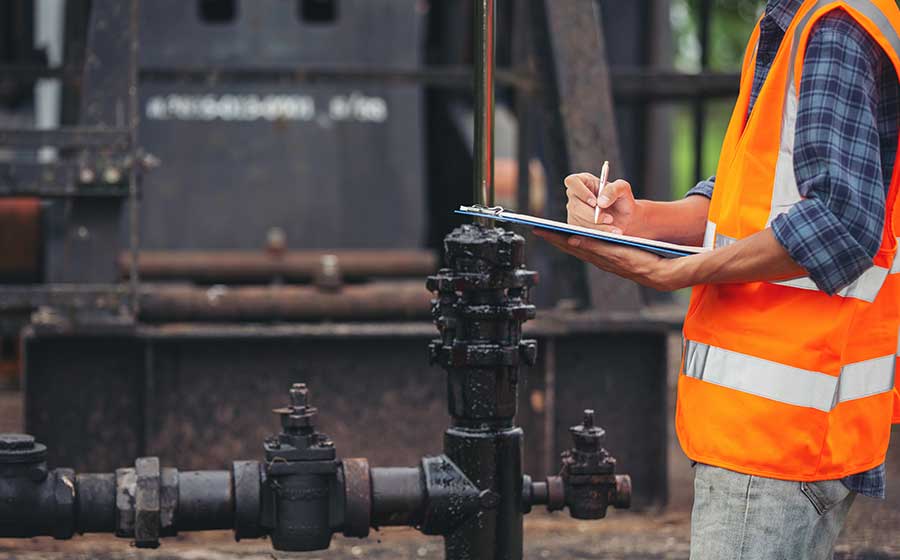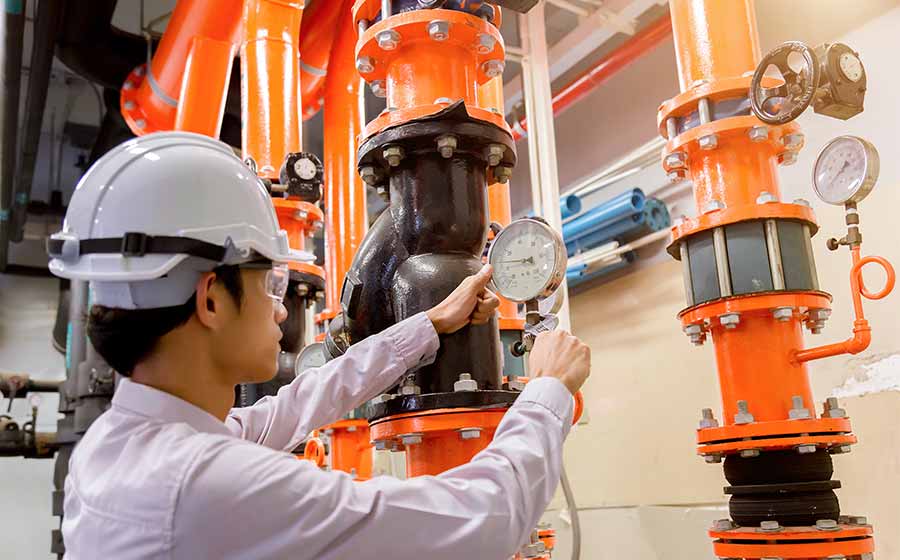

Pumps are the beating heart of all major industries, and power plants are no exception.
Pumps and pumping systems constitute a major part of all power plants. Pumps are used for various purposes in power plants – for handling fuels, displacing oils, for auxiliary requirements like cooling and lubrication and more.
Since pumps and pump systems are used for various purposes in a power plant, all plant maintenance engineers should have detailed knowledge about these systems. Here, in this guide, we list out the top factors that all plant maintenance engineers must know about pumping systems.
What are the Types of Pumps used in Power Plants?


Power plants make use of both centrifugal pumps and positive displacement pumps.
Centrifugal Pumps – Most plant engineers are familiar with the operation of a centrifugal pump. Centrifugal pumps make use of an impeller to displace the fluid. The velocity of the impeller provides energy to the displaced liquid, which increases the pressure (or head) of the liquid.
Positive Displacement Pumps – As the name implies, these pumps move the liquid. The pressure is generated due to the movement of the liquid.
5 Things to Know about Industrial Pumps in Power Plants



Irrespective of whether you’re a power plant maintenance engineer, a supervisor or an EPC (Engineering, Procurement, and Construction) leader here are the five things that you have to know about industrial pumps used in a power plant.
Liquid


The type and nature of the liquid being pumped play a crucial role in determining the right pump technology to use.
• For viscous liquids like low sulfur fuels, heavy crude oil, residual fuel oils, distillate fuels, opt for positive displacement pumps. For liquids with a viscosity higher than 100SSU, positive displacement pumps work better than centrifugal pumps.
• For low viscous liquids, centrifugal pumps make a better choice.
• For sludge and wastewater, progressive cavity pumps work better. These pumps are equipped to handle liquids containing abrasives and contaminants.
Pressure Supply


The pressure supply of the pumping system plays a crucial role in determining the type of pumps to use.
• For systems where the pressure supply keeps on changing, it’s recommended that you use a positive displacement pump.
• Centrifugal pumps work well with a specific pressure range. However, the efficiency of the centrifugal pump drops down if the pressure goes too low or too high.
Positive displacement pumps are the better choice when the viscosity of the liquid is likely to change, but it maintains a constant flow volume.
Liquid Discharge Volumes



If the system has varying pressure or discharge volumes, centrifugal pumps are most likely to operate outside of their BEP (Best Efficiency Point). This causes wear and tear on the pump, leading to repairs and breakdowns, which in turn increase the TCO (Total Cost of Ownership).
Positive displacement pumps work better when the liquid discharge volumes of the system fluctuate. Here, at Sintech, one of the top positive displacement pump manufacturers in India have a wide range of high-performance pumps that offer excellent efficiency and long-term reliability, even when the system pressures fluctuate up and down.
Operations


While choosing a pump for the power plan, you have to consider the mode of operation and operating conditions to make the right choice.
• If flow volumes remain constant, but the delivery head and pressure varies, positive displacement pumps are the better choice.
• On the other hand, centrifugal pumps are the better choice for operating low-viscous liquids at fixed operating conditions. Remember, that centrifugal pumps are likely to incur higher operational costs – repair, replacement of spare parts, downtime and periodic maintenance – when the viscosity and pressure keep on fluctuating.
Irrespective of whether you use centrifugal or positive displacement pump, the overall TCO can be reduced by operating the pump as close to the BEP as possible.
Choose the Right Pump Size


While deciding between centrifugal and positive displacement pump is important, you also have to consider the size of the pump. For instance, if you choose a pump that is too big for the current requirements, then it is likely to operate at lesser than optimum efficiency while consuming higher energy. This adds to the service and maintenance costs of the pump, increasing TOC.
On the other hand, choosing an undersized pump also has its own set of drawbacks. It may cost less initially. However, you’re likely to replace the pump a few years down the line, making the replacement costs outweigh the benefits of initial savings.
Follow this thumb rule while selecting pump size – choose a pump that is a good fit for worst-case power and flow requirements.
Finally, Consider the Cost of Maintenance


While choosing a pump, it’s highly recommended that you opt for a scheduled preventive maintenance program to avoid costly repairs and downtime. Pumps that are used for auxiliary purposes like lubrication require lesser maintenance than primary pumps that are used for critical applications like fuel forwarding and fuel injection.
Some best preventive maintenance tips for both positive displacement and centrifugal pumps:
• Check for leakage in mechanical seals. If the seals leak, replace them immediately.
• Check for signs of wear and tear in o-rings and gaskets.
• Check if the radial bearings are sealed properly.
• Maintain proper lubrication to avoid the generation of excessive heat and vibration.
• For centrifugal pumps, check for damages and signs of wear and tear on impellers.
• For positive displacement pumps, check if all moving parts of the pump like – gears, screws, housing – are in perfect condition.
• Always replace broken parts with OEs that are certified by the pump manufacturer. Avoid using pirated or knock-offs as it could lead to system failure and damage other components of the system.
Hope this guide serves as a good starting point for finding the right pumps for power plants and gives you a clear picture of the overall usage of pumps. For any further help, reach out to our pump experts here, at Sintech, leading centrifugal and positive displacement pump suppliers in India.
